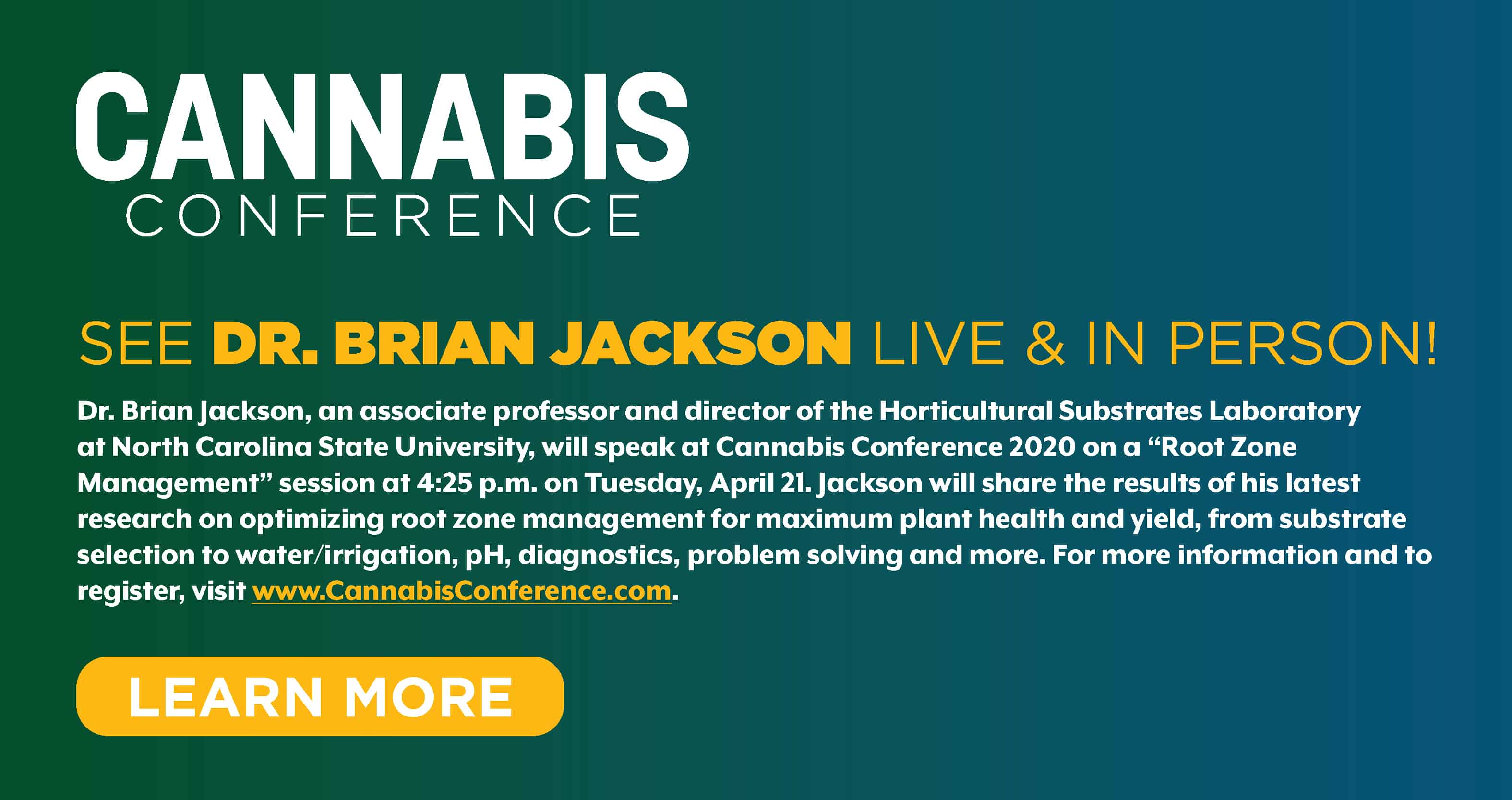Utah Senate Committee Approves Amendments to Medical Cannabis Law
Marijuana Industry News February 19, 2020 MJ Shareholders
Cannabis cultivators are diligent about the light their plants receive and the environmental controls in their grow rooms, but how often do they consider their crop’s root zone?
According to Brian Jackson, director of the Horticultural Substrates Laboratory at North Carolina State University, the root zone environment is just as important as the aerial environment for cannabis plants, and optimizing the root zone environment can help maximize both plant health and yield.
Here, Jackson discusses the importance of root zone management and best practices to help cultivators optimize this area of their operations.
Cannabis Business Times: How does the root zone environment affect plant health and yield in cannabis crops?
Brian Jackson: In nearly every way! The root zone environment in a container grown crop is as important as the aerial/atmosphere environment (light, CO2, relative humidity, etc.) surrounding the above-ground portion of the plant. When the accessibility and acquisition of water and nutrition come from the root environment, it is clear to appreciate the importance of providing and maintaining the most optimal and stable root environment possible.
One of the main advantages to using soilless substrates in container production of cannabis (or any crop) is the ability to control the growth and development of the plant as needed. Growers should be “precision growers” in that they control the plants as much as a possible to ensure maximum yield, optimal harvest time, and appropriate utilization of water and nutrients in the system.
CBT: What are some best practices for substrate selection that can help improve the root zone environment?
BJ: Knowing what questions to ask sales reps is a good place to start. Oftentimes, people do not know what questions to ask, much less what the right answers should be! I aim for my presentation [at Cannabis Conference] to arm growers with many questions and concepts that they should learn to use when communicating with a company regarding the selection and purchasing of a substrate product. I think this is true for all products, not just substrates. Developing relationships with reps and then selecting companies based on product offerings, technical support, knowledge of product and growing operations, willingness to work with [the] grower to develop/cater a soil product specific to their needs and grow operation, etc. are the key elements in choosing a substrate. Growers should choose companies, not products.

CBT: What are some irrigation tips that can help in this area?
BJ: Irrigation delivery method and management should be catered differently for different substrates, container types, stages of crop growth, weather patterns, etc. Either a grower chooses (for whatever reason) a specific irrigation method/system and then chooses a substrate that is best suited for that system, or a grower selects their containers first, then the appropriate substrate, and lastly the best irrigation method for that system. Either way, irrigation, like other variables or inputs, should be decided/chosen based on the other parts in the entire system.
CBT: What are some other general best practices for optimizing the root zone environment for cannabis?
BJ: It is best to use new growing media in containers for each cycle of crop grown. Be careful when reusing or recycling substrates. There are more often problems associated with this approach than there are benefits. This topic will be addressed in my presentation, as well as other related topics including the option of making one’s own growing media vs. buying commercial products. Also discussed will be the role of various substrate additives/amendments and the role they play (or don’t play) in the success and quality of the crop.
CBT: What else do you hope attendees will bring back to their business from your session at Cannabis Conference 2020?
BJ: A better understanding of the role that substrates play in a successful container-grown crop. The bigger take-home message may be knowing what questions to ask of growing media suppliers regarding the selection and management of container substrates for their crop. Understanding truly what substrates do and do not do will enable growers to make better informed and educated decisions regarding substrate selection, irrigation delivery and management, nutrient source and delivery, and container size/type selection.
Editor’s Note: This interview has been edited for style, length and clarity.
MJ Shareholders
MJShareholders.com is the largest dedicated financial network and leading corporate communications firm serving the legal cannabis industry. Our network aims to connect public marijuana companies with these focused cannabis audiences across the US and Canada that are critical for growth: Short and long term cannabis investors Active funding sources Mainstream media Business leaders Cannabis consumers









